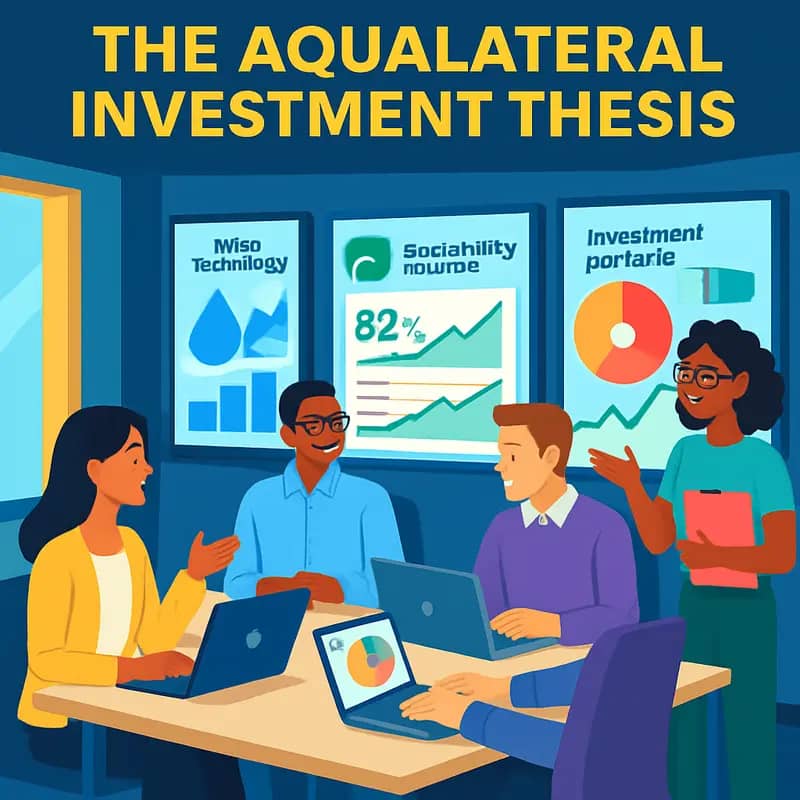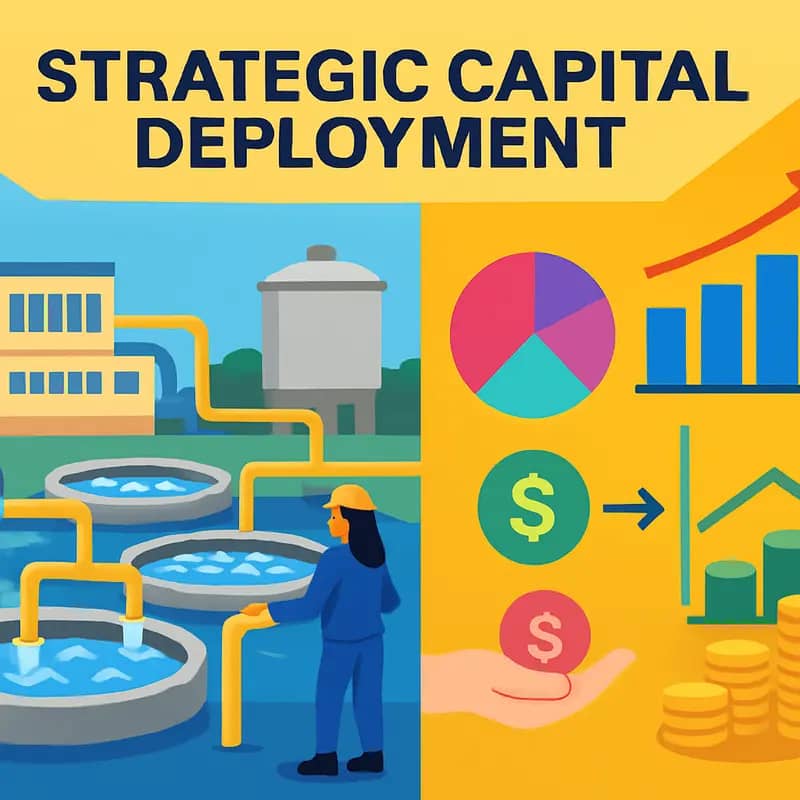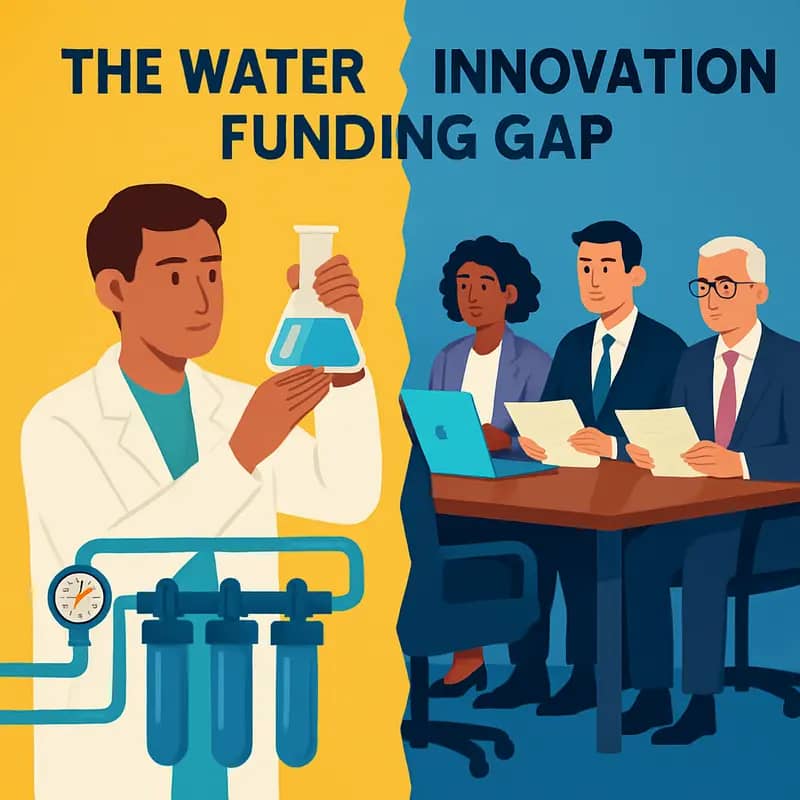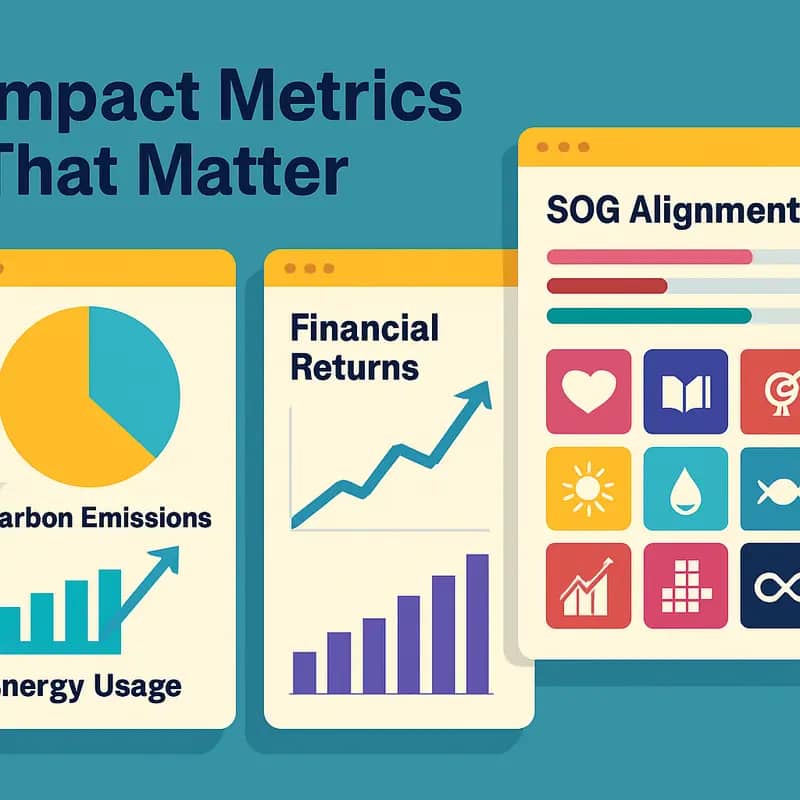From Brooklyn’s trendy Montague Street, a small but mighty team is rewriting the rules of water technology investment. Aqualateral, under the leadership of founder Allison and investments lead Jiten, has emerged as a distinctive force in the water sector – not just funding innovations, but catalyzing systemic change in how we access, treat, and manage our most precious resource. With a laser focus on Series A investments and a commitment to addressing acute water insecurity, Aqualateral represents a new breed of impact investors who understand that solving water challenges requires both technological innovation and deep community engagement.
Aqualateral is part of my Ultimate Water Investor Database, check it out!
Investor Name: Aqualateral
Investor Type: Impact
Latest Fund Size: $ Million
Dry Powder Available:
Typical Ticket Size: $10M – $30M
Investment Themes: Digital solutions, Decentralized treatment systems, Industrial water management
Investment History: $12266666.67 spent over 3 deals
Often Invests Along: Burnt Island Ventures
Already Invested In: Aclarity, Aclarity, Inc., Daupler, Inc.
Leads or Follows:
Board Seat Appetite: Rare
Key People: Kelly Trott, Jiten Manglani
The Aqualateral Investment Thesis

Aqualateral’s investment thesis centers on identifying and scaling breakthrough water technologies that address critical challenges in water security and sustainability. The firm takes a systematic approach to evaluating opportunities across three core pillars: transformative treatment technologies, digital solutions, and climate-resilient infrastructure.
In the treatment technology space, Aqualateral focuses on innovations that fundamentally reimagine conventional water and wastewater processing. The fund seeks solutions that can demonstrate significant improvements in energy efficiency, recovery rates, and contaminant removal while maintaining economic viability at scale. Of particular interest are technologies enabling water reuse in industrial applications and technologies tackling emerging contaminants like PFAS.
The digital solutions portfolio emphasizes technologies that enhance system intelligence and operational efficiency. This includes advanced sensors and monitoring systems, AI-powered analytics platforms, and smart water management tools that enable predictive maintenance and optimization. The goal is to drive widespread adoption of digital technologies that can dramatically improve how water infrastructure is operated and maintained.
Through its climate resilience investments, Aqualateral targets solutions that help water systems adapt to and mitigate climate impacts. This encompasses technologies for flood prediction and management, drought-resistant water supplies, and infrastructure hardening against extreme weather events. The firm prioritizes solutions with proven ability to enhance system redundancy and operational flexibility.
Across all investment areas, Aqualateral employs rigorous technical and commercial diligence to identify opportunities with genuine potential for large-scale impact. The firm looks for technologies that have demonstrated clear value propositions through pilot deployments while maintaining realistic pathways to widespread market adoption. Strong intellectual property protection and experienced management teams are considered essential.
While maintaining high standards for technical innovation, Aqualateral places equal emphasis on scalability and commercial viability. The firm seeks solutions that can be readily integrated into existing water infrastructure and business models, recognizing that even breakthrough technologies must overcome significant barriers to adoption in the conservative water sector.
Ultimately, Aqualateral’s thesis reflects a conviction that addressing global water challenges requires both technological innovation and viable paths to market adoption. By focusing on solutions that combine transformative capabilities with commercial scalability, the firm aims to accelerate the deployment of critical water technologies while generating attractive returns for investors.
Strategic Capital Deployment

Aqualateral’s approach to Series A investments reflects a sophisticated understanding of the critical inflection point these rounds represent for emerging water technology companies. The firm typically participates in rounds ranging from $5-15 million, strategically positioning themselves alongside co-investors who bring complementary expertise and resources.
Central to their investment strategy is a rigorous evaluation framework that prioritizes solutions with demonstrable market validation and clear pathways to scale. Rather than pursuing incremental improvements, Aqualateral focuses on transformative technologies that can fundamentally reshape water management practices. This includes advanced water treatment processes, smart infrastructure systems, and breakthrough purification technologies that dramatically reduce energy consumption or operational costs.
The firm’s due diligence process heavily weights a company’s ability to achieve meaningful impact metrics while building a sustainable business model. They specifically seek out technologies that can demonstrate quantifiable improvements in water efficiency, quality, or accessibility. Their portfolio companies must show potential for at least a 10x improvement in key performance indicators compared to existing solutions.
In structuring their investments, Aqualateral employs flexible capital deployment mechanisms that align with the unique needs of water technology companies. This includes milestone-based funding releases tied to specific technical or commercial achievements, as well as provisions for follow-on investment rights. This approach helps de-risk the considerable capital requirements typically associated with scaling water infrastructure solutions.
Aqualateral has developed particular expertise in identifying technologies that can achieve rapid market adoption through strategic partnerships. They actively leverage their network of municipal utilities, industrial operators, and engineering firms to create pathways for their portfolio companies to quickly establish market presence. This hands-on approach to fostering commercial relationships sets them apart from traditional venture capital firms.
Their investment thesis is deeply informed by an understanding of regulatory trends and emerging water stress factors across different geographies. As explored in their approach to mitigating water risk through impact investing, they seek opportunities where evolving policy frameworks or increasing water scarcity create natural market pull for innovative solutions.
By maintaining a focused portfolio of 8-12 active investments, Aqualateral ensures they can provide the depth of support required to help companies navigate the complex stakeholder landscape characteristic of the water sector. This concentrated approach allows them to be deeply involved in key strategic decisions and help portfolio companies avoid common pitfalls in scaling water technologies.
Community-Centric Impact

At the heart of Aqualateral’s investment philosophy lies a profound understanding that water challenges are inherently local. While deploying strategic capital at scale, the firm has developed a distinctive approach to community engagement that transforms traditional investor-investee relationships into collaborative partnerships for lasting impact.
Aqualateral’s community-first methodology begins long before any investment decisions are made. The firm embeds itself within local water ecosystems, fostering relationships with municipal leaders, utility operators, and grassroots organizations to gain nuanced insights into region-specific water challenges. This deep engagement allows them to identify solutions that are both technologically innovative and culturally appropriate.
The firm’s partnerships extend beyond simple funding relationships. They actively facilitate connections between portfolio companies and local stakeholders, creating feedback loops that continuously refine and improve water solutions. This approach has proven particularly valuable in regions where traditional infrastructure solutions have failed to address complex socio-environmental challenges.
One distinctive aspect of Aqualateral’s community engagement is their emphasis on capacity building. Rather than simply implementing solutions, they invest in training local water professionals, supporting knowledge transfer, and developing long-term maintenance capabilities within communities. This ensures that technological innovations remain sustainable and effective long after the initial implementation phase.
The firm also recognizes that successful water solutions must address intersecting challenges of equity, accessibility, and environmental justice. They prioritize investments that demonstrate clear social returns alongside financial ones, measuring impact through metrics like improved water access, reduced pollution levels, and enhanced community resilience.
Aqualateral’s collaborative approach has yielded remarkable results. Their portfolio companies consistently achieve higher adoption rates and more sustainable outcomes compared to traditional top-down implementation models. This success has challenged conventional wisdom about the trade-offs between profitability and social impact in water technology investments.
As water security challenges intensify globally, Aqualateral’s community-centric model offers valuable lessons for the broader impact investment sector. Their experience demonstrates that meaningful collaboration with local stakeholders isn’t just about social responsibility—it’s a crucial element of building successful, scalable water solutions that create lasting positive change.
Future of Water Investment

Aqualateral’s vision for water technology investment centers on three interconnected pillars that are reshaping how we approach water security challenges. Their strategy emphasizes the critical convergence of digital innovation, distributed infrastructure, and climate resilience.
Digital transformation stands as a cornerstone of their investment thesis. Machine learning and artificial intelligence are enabling predictive maintenance systems that can forecast equipment failures before they occur, while digital twin technology allows operators to simulate and optimize treatment processes in virtual environments. These advances aren’t just incremental improvements – they represent a fundamental shift in how water infrastructure is managed and maintained.
The accelerating trend toward decentralized water systems forms another key focus area. Traditional centralized infrastructure faces mounting challenges from population growth, urbanization, and aging systems. Aqualateral sees tremendous potential in modular, scalable solutions that can be deployed closer to the point of need. These range from building-scale water recycling systems to community-level treatment facilities that reduce dependence on massive centralized plants.
Perhaps most significantly, Aqualateral recognizes that water infrastructure must evolve to address intensifying climate impacts. Their investment strategy prioritizes technologies that enhance system resilience while reducing energy consumption and carbon emissions. This includes innovations in water reuse, energy-efficient treatment processes, and nature-based solutions that work with natural systems rather than against them.
What sets Aqualateral’s approach apart is their emphasis on solutions that can scale rapidly while delivering measurable impact. Rather than pursuing incremental efficiency gains, they seek out transformative technologies that can fundamentally change how we manage water resources. This means looking beyond traditional water sector boundaries to identify cross-industry innovations that could be adapted for water applications.
The fund maintains a particular interest in technologies that enable better decision-making through improved data collection, analysis, and visualization. As noted in how to cleverly embrace the digital craze in the water industry, the ability to generate actionable insights from water system data represents an enormous opportunity for optimization and risk reduction.
Looking ahead, Aqualateral sees increasing convergence between water technology innovation and climate adaptation imperatives. Their investment strategy reflects a growing recognition that water security solutions must simultaneously address resource efficiency, system resilience, and sustainability objectives. This integrated approach positions them to capitalize on emerging opportunities while driving meaningful progress toward water security goals.
The Water Innovation Funding Gap

Despite an abundance of promising water technologies emerging from research labs and startups, a persistent funding gap threatens to strand these innovations before they can deliver real-world impact. This critical disconnect between water technology developers and capital represents one of the sector’s most pressing challenges.
Water entrepreneurs face unique obstacles in securing investment that their counterparts in other sectors don’t typically encounter. The water industry’s fragmented nature, complex regulatory environment, and long sales cycles create significant barriers to entry. Traditional venture capital models, optimized for rapid scaling and quick exits, often prove incompatible with water technology commercialization timelines that can stretch 5-10 years.
The numbers paint a stark picture. While water technology companies need an estimated $100 million to scale a solution from pilot to commercial deployment, most struggle to raise even seed funding. Early-stage water startups frequently fall into a “valley of death” between initial R&D funding and commercial financing, where neither grants nor traditional investment vehicles offer suitable capital.
Municipal utilities, which could benefit enormously from innovative solutions, operate on constrained budgets and conservative procurement processes that favor established technologies. This creates a chicken-and-egg problem where new technologies can’t get reference installations without funding, but can’t attract funding without proven installations.
Private investors often shy away from water technology investments due to several factors. The sector’s highly technical nature requires specialized knowledge to evaluate opportunities. Water’s status as a public good complicates pricing and business models. Additionally, the industry’s regulated nature can extend development timelines and increase costs unpredictably.
Yet the potential impact of bridging this funding gap is immense. Water technology innovations could help address critical challenges in water security, quality, and accessibility while generating attractive returns. The key lies in developing new funding models that align with water technology development realities.
As explored in ‘How to actively invest philanthropy and save the water world‘, innovative financing mechanisms that blend different capital types show promise in filling this gap. By combining patient capital, catalytic funding, and traditional investment, these approaches can provide water technology companies the runway needed to reach commercial success while delivering both financial returns and positive impact.
Data-Driven Deal Flow

At the heart of Aqualateral’s investment platform lies a sophisticated data analytics engine that transforms the traditional water technology dealmaking process. By leveraging advanced algorithms and proprietary datasets, the platform creates unprecedented efficiency in matching promising water innovations with aligned investors.
The analytics engine processes multiple layers of data to evaluate water technologies, including technical performance metrics, market potential indicators, and environmental impact assessments. Each technology undergoes rigorous analysis across over 50 parameters, from treatment efficacy and energy consumption to scalability potential and regulatory compliance. This comprehensive evaluation generates a standardized scoring framework that enables objective comparison across different solutions.
What sets Aqualateral’s approach apart is its ability to contextualize technical capabilities within real-world applications. The platform maintains an extensive database of water challenges faced by utilities, industries, and municipalities worldwide. By mapping technology capabilities to specific use cases, the system can identify optimal deployment opportunities and calculate potential returns on investment with unprecedented precision.
On the investor side, the platform maintains detailed profiles of capital providers, including their investment criteria, sector focus, and risk appetite. The matching algorithm considers factors beyond simple financial metrics – it evaluates strategic alignment, geographic preferences, and impact objectives. This multi-dimensional matching process significantly increases the likelihood of successful partnerships.
The data-driven approach has yielded remarkable results in streamlining the deal flow process. Traditional water technology investments often took 12-18 months from initial screening to deal closure. Aqualateral’s platform has reduced this timeline by 60% while improving the quality of matches. The standardized evaluation framework has also helped investors better understand and compare opportunities in the complex water technology landscape.
Perhaps most importantly, the platform’s analytics capabilities continue to evolve through machine learning. Each completed transaction enriches the dataset, enabling more refined matching and better predictive capabilities for future deals. This creates a powerful network effect – as more participants join the platform, its ability to facilitate successful matches improves exponentially.
The implications extend beyond individual transactions. The aggregated data provides valuable insights into emerging technology trends, market gaps, and investment patterns in the water sector. These insights help shape Aqualateral’s strategic initiatives in building the broader water innovation ecosystem.
As discussed in What do you need to know to invest wisely in water technologies?, intelligent data analysis is transforming how we evaluate and fund water solutions. Aqualateral’s platform represents a significant step forward in bringing much-needed efficiency and transparency to water technology investment.
Building the Water Innovation Ecosystem

Innovation in water technology requires more than just breakthrough ideas – it demands a carefully orchestrated ecosystem where entrepreneurs, investors, and industry experts can collaborate effectively. Aqualateral has positioned itself as an ecosystem architect, creating spaces and frameworks that enable meaningful connections while accelerating the development and adoption of water solutions.
At the core of Aqualateral’s ecosystem-building approach lies its innovation hub model. These physical and virtual spaces serve as convergence points where startup founders can access specialized equipment, testing facilities, and most importantly, the collective expertise of industry veterans. Rather than working in isolation, entrepreneurs can rapidly prototype their technologies while receiving real-time feedback from potential customers and partners.
The firm has also pioneered a unique mentorship program that pairs promising water startups with seasoned executives and technical experts. Beyond traditional advisory relationships, these mentors often become early adopters of new technologies, providing crucial validation and real-world testing environments. This practical support helps bridge the notorious “valley of death” that claims many water innovations before they reach commercial scale.
Recognizing that sustainable innovation requires sustainable funding, Aqualateral has cultivated a diverse investor network spanning venture capital, corporate strategic investors, family offices, and impact-focused funds. The firm regularly hosts targeted matchmaking events where carefully screened startups pitch to pre-qualified investors who understand the nuances of water technology commercialization. This focused approach, as explored in depth in this analysis of water innovation acceleration, has resulted in significantly higher success rates for capital raises.
Beyond individual connections, Aqualateral fosters broader ecosystem collaboration through its water innovation working groups. These topic-focused cohorts bring together startups, utilities, industrial end-users, and researchers to tackle specific water challenges collectively. The resulting cross-pollination of ideas and perspectives has sparked numerous joint development projects and commercial partnerships.
Critically, Aqualateral measures ecosystem health through both quantitative and qualitative metrics. While tracking standard measures like capital raised and commercial deals closed, the firm also monitors softer indicators such as knowledge sharing, talent mobility between organizations, and the formation of new collaborative ventures. This holistic view ensures the ecosystem remains vibrant and self-sustaining rather than dependent on any single player.
The resulting network effect has created powerful momentum – each new participant strengthens the ecosystem, attracting more innovators, investors, and industry partners. This virtuous cycle is accelerating the pace of water innovation while increasing the odds of success for promising technologies. As water challenges grow more urgent globally, Aqualateral’s ecosystem approach offers a proven model for transforming water technology from concept to impact at scale.
Impact Metrics That Matter

At Aqualateral, measuring impact goes far beyond traditional financial returns. The firm has developed a comprehensive framework that evaluates water technology investments through multiple interconnected lenses – quantifying both tangible outcomes and broader systemic changes.
The foundation of their impact measurement approach centers on three key metrics categories: Environmental Benefits, Social Progress, and Financial Sustainability. For environmental impact, Aqualateral tracks gallons of water saved or treated, reductions in energy consumption, and decreases in chemical usage across their portfolio companies. These metrics are standardized and aggregated quarterly to assess the cumulative effect of their investments on water conservation and quality.
On the social dimension, the firm examines how their invested technologies improve water access, enhance public health outcomes, and create jobs in the water sector. They’ve pioneered methods to calculate the number of people gaining reliable water access through their portfolio companies’ solutions. This human-centric measurement approach helps validate that innovations are truly serving communities in need.
Financial metrics remain crucial but are viewed through a long-term sustainability lens. Rather than focusing solely on short-term returns, Aqualateral evaluates the economic resilience of water solutions. This includes analyzing cost savings for utilities and industrial customers, examining revenue model sustainability, and assessing the potential for technology scaling.
What sets their framework apart is the emphasis on interconnections between metrics. For instance, when evaluating a water reuse technology, they consider not just the volume of water saved, but also the corresponding energy savings, greenhouse gas reductions, and economic benefits for end-users. This systems thinking approach helps identify solutions that create cascading positive impacts.
The firm has also integrated forward-looking indicators into their measurement framework. These predictive metrics help assess how investments might perform under various climate and demographic scenarios, ensuring their portfolio is positioned for long-term impact. By combining historical performance data with future projections, Aqualateral can better direct capital toward technologies with enduring positive effects.
Transparency is central to their impact measurement philosophy. Portfolio companies must commit to regular impact reporting using standardized methodologies. This data is independently verified and shared with stakeholders through detailed impact reports that go beyond typical financial statements.
Learn more about measuring impact in water investments in our analysis of how to mitigate different types of water risk through strategic investment approaches.
Final words
Aqualateral stands at the forefront of a critical shift in water technology investment, demonstrating that financial returns and meaningful impact aren’t mutually exclusive. Their strategic focus on Series A investments, coupled with deep community engagement and a comprehensive understanding of water challenges, positions them uniquely in the impact investment landscape. By prioritizing scalable solutions and maintaining strong partnerships with local organizations, Aqualateral is building a framework for sustainable water security that other investors would do well to study. As water challenges intensify globally, their approach to blending technological innovation with community-driven solutions offers a compelling model for the future of water investment. The success of their portfolio companies and the tangible impact on communities facing water insecurity validate their thesis that strategic capital deployment in water technology can drive both financial returns and lasting social change.
Wanna explore the Full List of Water Investors that cut at least two checks over the past decade? Check it out and bookmark it, I update it regularly!
Learn more: https://dww.show/the-ultimate-water-investor-database/
About us
Through my ‘(don’t) Waste Water’ platform, I offer unique and insightful coverage of the water industry that combines technical expertise with engaging storytelling. If you haven’t yet, it might be time for you to subscribe to the podcast, the youtube channel and/or the newsletter!
